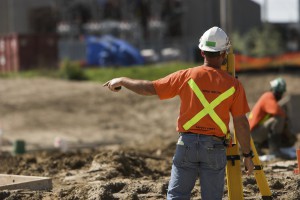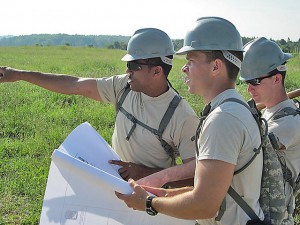Overlooked Benefits of Using GIS for Surveying
What is GIS Used For?
GIS (Geographic Information System) provides a central location for data and analysis critical to today’s surveying, planning, construction, and management. It allows professional land surveyors a way to provide more accurate and less expensive surveys.
While these features alone are enough to justify using GIS, there are a number of additional benefits of using GIS and Surveying which can add value to commercial, industrial and oil & gas construction projects. These provide additional value not just to the surveyors but to their clients as well. In this article, we explore three of the overlooked benefits of using GIS and how they impact a construction project.
The Additional Benefits of Using GIS Technology for Land Surveying
Most sophisticated professional land surveyors rely on GIS in their everyday work processes. In addition to more rapid data collection and better planning, design, construction, and resource management, GIS benefits the professional land surveyor with the following:
1. Better Decision Making
Collected, analyzed, and mapped data help managers make better and more informed decisions about plan location and design. Construction projects depend on a wealth of data for things like site selection, accesses and easements, zoning restrictions, conservation of environmentally sensitive areas, natural resource extraction, existing utilities and community resources. GIS provides this additional information, allowing for informed decision making and concise planning in consideration of location, people, and the environment.
2. Reliable Records Retention
Historic data, documents, and maps provide a basis for a prospective project’s feasibility. More accurate background information leads to more options to satisfy all concerns about the project. This gives design managers, politicians, and interest groups the right data about location, resources, and previous development to drive project outcome.
Equally important are as-built drawings, updated base maps, and current data after the project is completed. Government organizations in particular are responsible for maintaining authoritative public records regarding changes of geography (geographic accounting), topography, and land use. Zoning, population, land ownership, administrative boundaries, and private access roads to restricted lands, are contained in the GIS cultural geographic records. Physical geography such as forest clearing, biological assessments, environmental deviations, landmarks, courses, measurements, and water resources (hatcheries, intakes and dams) are also a part of GIS geographic records.
3. Better Land Use Management
GIS is quickly becoming the standard for government and larger corporations. It’s an important tool that helps to envision, develop, and formally illustrate ideas of expansion, acquisition, and notable resolution to congestion, pollution, and resource availability concerns.
Historical data may be used as base maps for conceptualizing, understanding, and prescribing action and utilizing available resources. Various data overlays provide additional geographic data, recurring patterns, sensitive areas, hazards and relationships associated with practical land use, environment, and security issues.
Environmental Impact Statements (EIS) require large amounts of varying kinds of data to be collected and analyzed. Project permits by government agencies hinges on collected EIS and BA (Biological Assessment) data. The project team is typically comprised of personnel in the office and out in the field, the client, and consultants. All members need access to surveys and analysis data at some point during the decision making and construction problem solving stages. Information sharing is critical for managing teams in remote areas. GIS offers a central database resource that all groups may access, analyze, and input into the project’s conversation.
GIS has transformed how organizations manage their resources, solve problems, make decisions, and communicate. To learn more about the benefits of using GIS for land surveying, please feel free to contact us with any questions that you may have.





